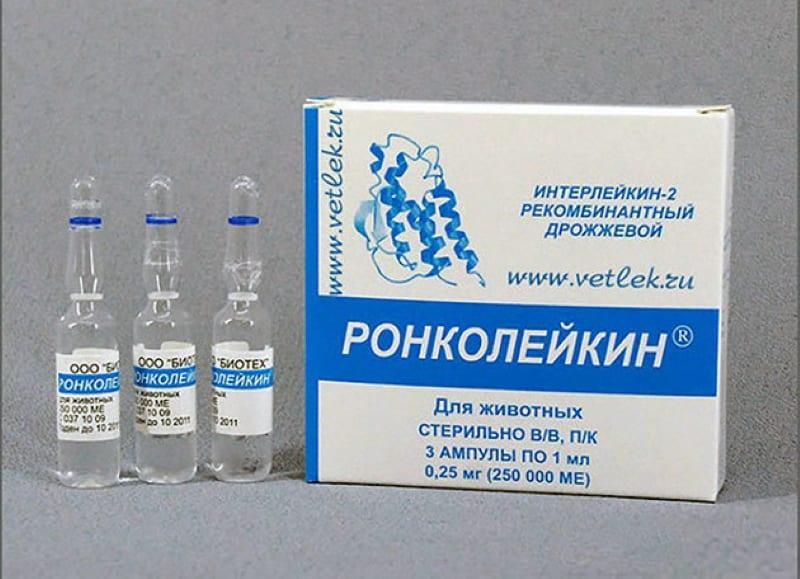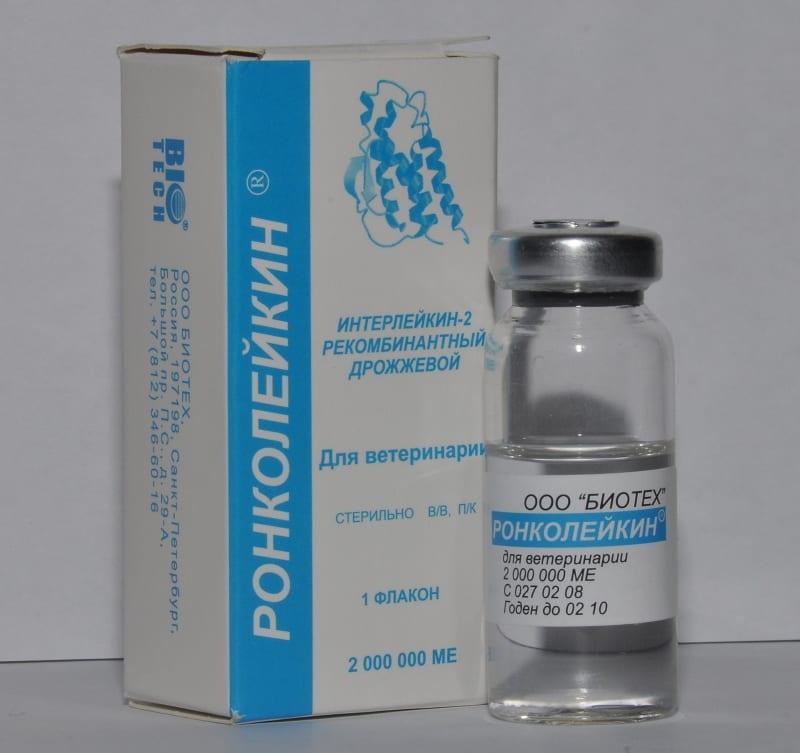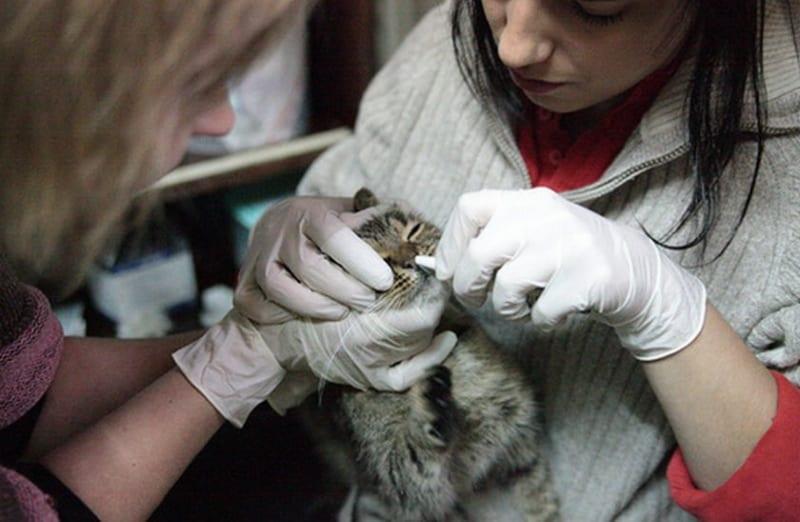Immunomodulator Roncoleukin - instructions for use for cats
 Cats are said to have nine lives. Maybe this is true, but they get sick almost as much as we do. The drug Roncoleukin can protect your pet from diseases or help him recover, the instructions for use for cats of which have their own characteristics. Is not antibiotic, but an immunomodulator, which was originally created for people. But thanks to its effectiveness, the drug quickly received a veterinary version. It is important not only that it significantly strengthens the immunity of weakened and sick cats. But it also helps to quickly get rid of many diseases, and even prevent some of them.
Cats are said to have nine lives. Maybe this is true, but they get sick almost as much as we do. The drug Roncoleukin can protect your pet from diseases or help him recover, the instructions for use for cats of which have their own characteristics. Is not antibiotic, but an immunomodulator, which was originally created for people. But thanks to its effectiveness, the drug quickly received a veterinary version. It is important not only that it significantly strengthens the immunity of weakened and sick cats. But it also helps to quickly get rid of many diseases, and even prevent some of them.
The drug is produced in liquid form. The almost clear liquid is poured either into 1 ml glass ampoules or into 10 ml vials each. The active ingredient is interleukin-2. The medicine should be stored in the refrigerator, and the opened ampoule is valid for no more than 4 days.
For what diseases is Roncoleukin used for pets

- respiratory diseases (sinusitis, bronchitis, rhinitis);
- eye diseases (conjunctivitis, keratitis, blepharitis);
- oncology;
- purulent-inflammatory processes (staphylococcus, sepsis, endometritis);
- skin diseases (eczema, dermatitis);
- lesions of the oral cavity (stomatitis, jaw osteomyelitis);
- hypothermic syndrome (critical drop in body temperature).
The drug is contraindicated if the cat is allergic to its components, acute heart and pulmonary failure. Also, it should not be taken by animals with autoimmune pathologies and diseases of the brain.
Roncoleukin - instructions for use for cats
Depending on the specific problem, the immunomodulator can be given to the animal in three ways:
- Intranasally, that is, instilled into the nose. So the medicine is given to kittens or adults, mainly to prevent the appearance of various infections. The drug is preliminarily diluted (for 1 ml of the drug - 5 ml of saline).

- Solder. The drug is diluted in 10 ml of saline and given no more than 2 times to prevent stressful situations.

- Outwardly for treating wounds, or for compresses. It is usually used once, after diluting the ampoule according to paragraph 2.

- Intravenous (only in a clinic) for infectious diseases and surgical interventions.

- Subcutaneously (injection to the withers). A 1 ml ampoule is diluted 1: 2 with saline. The treatment regimen and the number of injections depends on the cause and can range from 1 to 5 injections.

The advantage of the immunomodulator is that it can be given and pricked to pregnant cats and babies. The main thing is not to combine the drug with glucose, for example, in the same syringe.